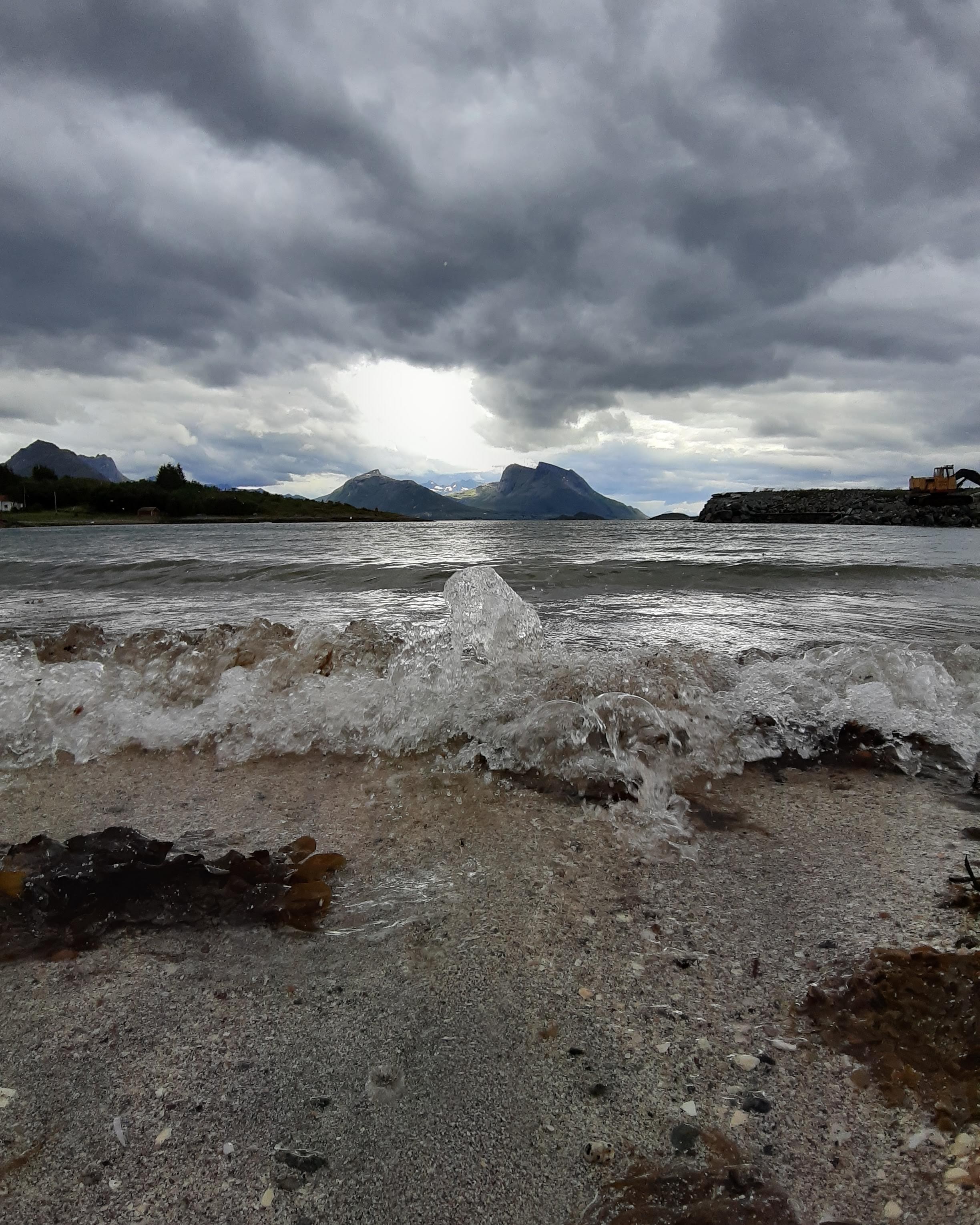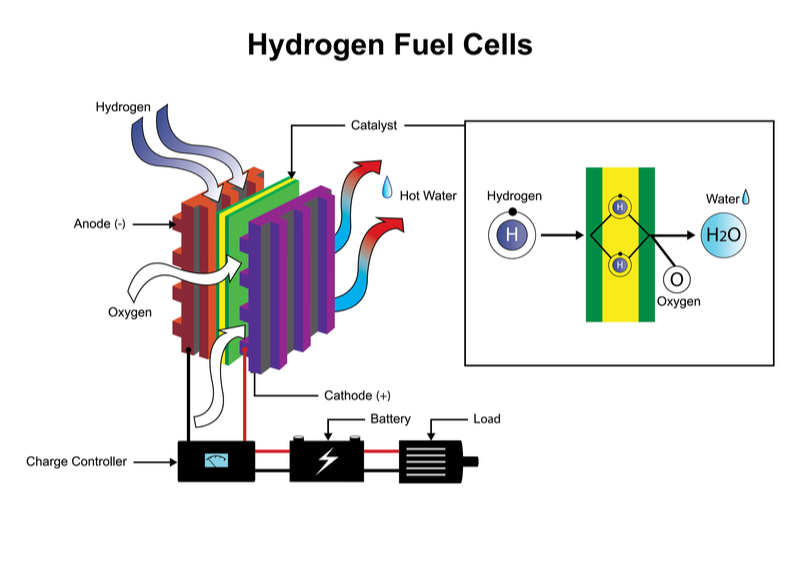
Hydrogen
Hydrogen is one of the most common elements in the universe. As an example from our own galaxy; the sun is estimated to consists of around 74% hydrogen.
The german airship Hindenburg was one of many airships that used hydrogen to lift it up due to the low density of hydrogen. But the hydrogen gas is also highly flammable, and Hindenburg exploded in 1937 due to this fact, and these kind of airships never again became a success.
As the picture indicates, water is all around us on earth. This is ocean water outside Mo i Rana in Norway, and it has a salinity of around 3,5%. Water (H2O) consists of 2 hydrogen (H) atoms joined together with one oxygen (O) atom. When these two different elements are allowed to react together (fusion) then energy is released. This energy can be used. To use hydrogen to propel a vessel or a car, then one uses a fuel cell.

This hydrogen fuel cell produces electrisity, that can be used to operate an elctric motor. The motor can do a number of things depending on what kind work (joule) one want to do. As an example, hydrogen is used in cars to provide electrisity, that again gives energy (watt) to an electric motor. The efficiency of a fuel cell is up to 60%. So, of the energy potential of hydrogen, the fuel cell produces electricity equivalent to 60%.
Why not tap electricity directly from the electricity grid at home then? Well, for one; you do not always have a grid available. You might be far out at the pampas of Argentina, or far out in the wilderness of Canada. No electricity grid there! And for a second argument; to produce electricity you will need some kind of work (joule again), such as converting waterfall energy to electricity using a turbine of some kind..
The advantage of hydrogen
Hydrogen does not pollute while producing energy. When it combusts, it simply produces water!
Environmental Vision Norway want to promote what we think is the best way to produce hydrogen: Using termal energy from the hot center of the earth (Tellus) to produce steam. The steam can be directed to a steam turbine, and the turbine can produce electricity. The electricity can be used to produce pure hydrogen in a number of ways. Here are two of them described briefly:
Thermochemical water splitting processes use high-temperature heat (500°–2,000°C) to drive a series of chemical reactions that produce hydrogen. The chemicals used in the process are reused within each cycle, creating a closed loop that consumes only water and produces hydrogen and oxygen.
Or electrolysis of water:

Islands such as Island, Lanzarote and the Azores has unlimited access to termal energy only a few meters below where they normally walk, and companies can use this free energy to produce hydrogen in an environmentally friendly way.
It’s a win – win!
